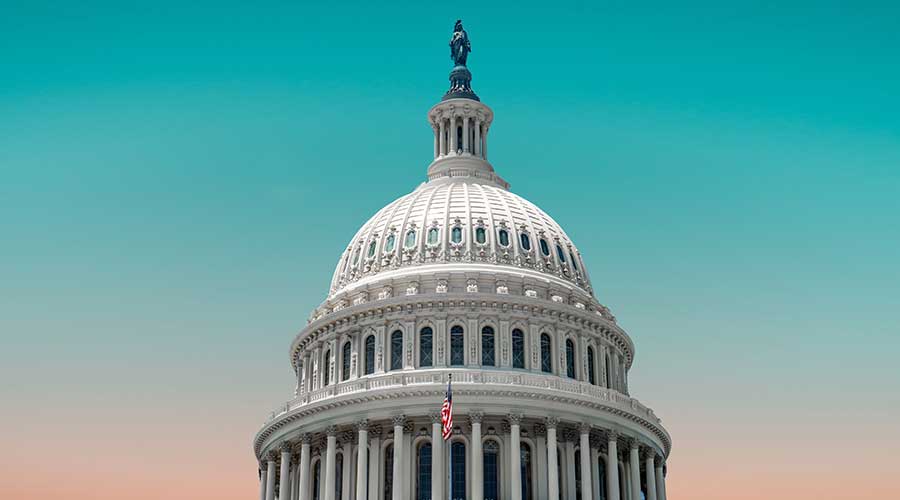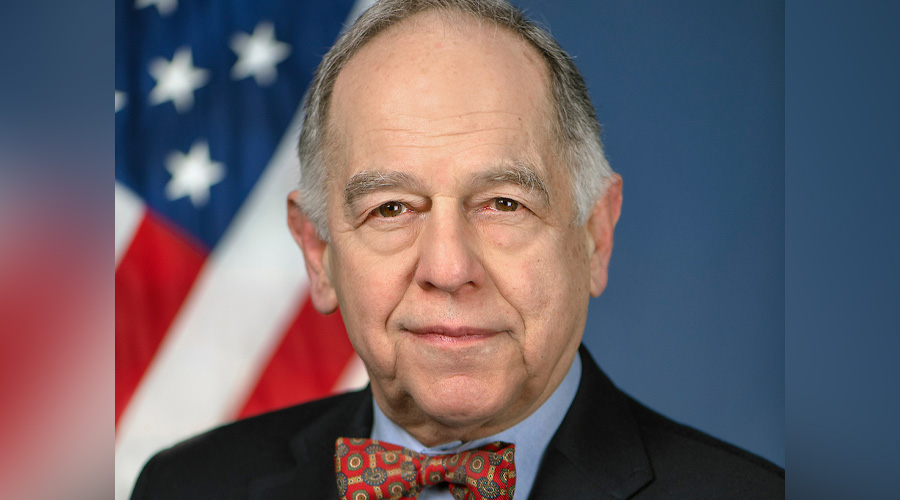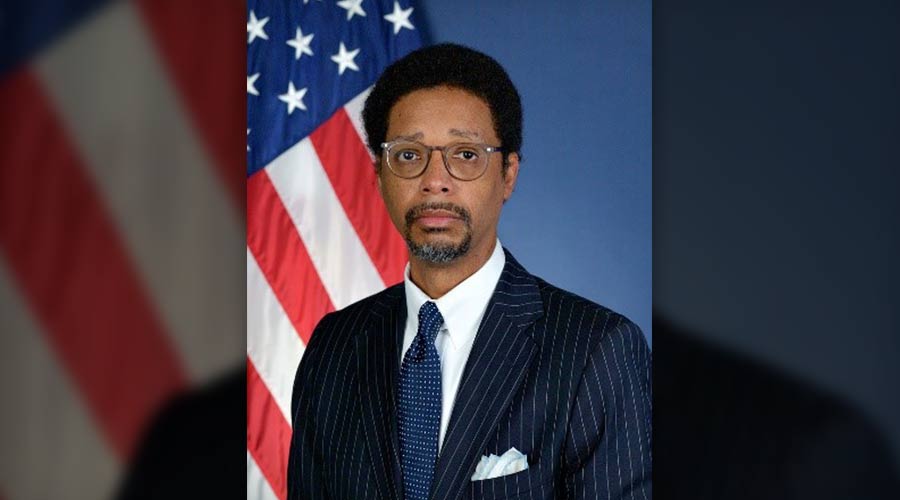Stay updated on news, articles and information for the rail industry
 railPrime
railPrime
July 2011
Rail News: Short Lines & Regionals
Railroad Day on Capitol Hill (preview)
— by Pat Foran, Editor
A proposal to elicit private-sector involvement in Amtrak and a public hearing to discuss the state of rail competition put rail issues front and center in D.C. last month, and an annual rail industry gathering on Capitol Hill ought to keep them top of mind this month.
On July 14, hundreds of industry representatives will descend on Washington, D.C., to lobby for rail-related legislation and policy pursuits at Railroad Day on Capitol Hill.
The annual event is organized by the American Short Line and Regional Railroad Association (ASLRRA), Association of American Railroads (AAR), National Railroad Construction and Maintenance Association Inc. (NRC), Railway Engineering-Maintenance Suppliers Association, Railway Supply Institute, Railway Systems Suppliers Inc., Railway Tie Association and other rail industry groups.
The issues the lobbyists-for-the-day figure to discuss with lawmakers and legislative aides are familiar ones. They'll be hitting the Hill to persuade Congress to support investment incentives that would stimulate growth, and reject measures the rail lobby insists would limit railroads' ability to invest in infrastructure. They'll push for a more balanced transportation infrastructure spending policy. They'll also weigh in on the call to boost current truck size and weight limits.
One of this year's challenges is delivering the various rail messages to 94 new lawmakers — the largest freshman class in two decades.
"Many [congressmen] are putting 100 percent of their attention on the budget and the budget deficit," says Keith Hartwell, a partner in Chambers, Conlon & Hartwell L.L.C. (CCH), which lobbies on behalf of ASLRRA. "It doesn't mean they don't understand the [rail] message or that they aren't sympathetic. It's just not where their focus is."
Adds NRC President and CCH partner Chuck Baker: "The freshmen congressmen seem to recognize that freight rail is a solution to problems in this country, and they're very eager to help — as long as you aren't asking for money."
Freight-rail lobbyists won't be asking for funds on "Railroad Day," but they plan to make their collective voices heard. Here's a sampling of what's on the July 14 discussion docket.
The Short-Line Tax Credit
A Railroad Day perennial, extending the Section 45G tax credit is "perhaps the centerpiece of ASLRRA's legislative work," as noted on the association's website. Reps. Lynn Jenkins (R-Kan.), along with Earl Blumenauer (D-Ore.), Bill Shuster (R-Pa.) and Jerry Costello (D-Ill.), have introduced legislation (H.R. 721) to extend the Section 45G credit. Sens. John Rockefeller (D-W.Va.) and Mike Crapo (R-Idaho) introduced a companion bill in the Senate. Originally enacted in 2004, Section 45G provides an incentive for short lines to invest their dollars in track rehabilitation and improvement projects.
The credit, which is capped based on a mileage formula, is scheduled to expire at 2011's end.
"Traditionally, we've tried to get as many sponsors on [the tax credit bills] that we can — 250-plus in the House, 50-plus in the Senate — to demonstrate to leadership that this is a bill that [can pass]," Hartwell says.
Given the number of new congressfolk, the signature collecting might take a bit longer this go-round. But as of mid-June, the House bill had about 70 co-sponsors; the Senate bill, about 20.
"We've got 18 or 19 freshmen signed on now, so we know it's doable," Hartwell says.
Truck Size and Weight
Reps. Jean Schmidt (R-Ohio) and Mike Michaud (D-Maine) reintroduced the Safe & Efficient Transportation Act (SETA) or H.R. 763, which would enable states to increase truck weight limits on interstate highways. Current truck weight limits are set at 80,000 pounds. SETA would enable states to increase the limit to 97,000 pounds.
The AAR, ASLRRA, Coalition Against Bigger Trucks and other rail industry constituents long have opposed efforts to increase truck weights on highways. The argument: Heavier or longer trucks should not be allowed on highways unless trucking firms pay the full cost of the damage they cause — the way railroads fund most of their own infrastructure costs. Now, operators of 80,000-pound trucks underpay their fair share of the cost to build and maintain public highways by up to 30 percent, some rail advocates say.
"And it's not just the interstates that would be impacted by the heavier weight — it's county roads, state roads, even the intermodal network," says AAR President and CEO Ed Hamberger. "A double-stack well car is not designed to hold a double-stack that's 34,000 pounds heavier."
And there are corresponding safety questions, rail advocates say. For example, "there are 65,000 structurally deficient bridges in the United States," Hamberger says.
Last month, House Transportation and Infrastructure Committee Chairman John Mica (R-Fla.) said he intended to roll out a surface transportation reauthorization plan during the first week of July, with a bill markup to follow on July 12. Hamberger figures there "will be an effort to raise the truck weight limit to 97K" at that time.
Economic Regulation
Economic regulation is always top of mind at Railroad Day, regardless of whether there's pending legislation to discuss (as of last month, there wasn't). But last fall, Surface Transportation Board Chairman Daniel Elliott III announced it was time for the STB to revisit the rail regulatory framework — to hold public hearings to examine the state of rail competition and explore policy initiatives that could promote more rail-to-rail competition.
More than three dozen rail industry stakeholders testified at the first hearing, held June 22-23 in D.C. The STB should maintain and preserve today's "balanced" regulatory framework because it has "benefited rail customers and the public alike," enabling freight roads to invest more than $20 billion in private funds annually in the rail network, the AAR's Hamberger said in his testimony.
In general, rail lobbyists believe lawmakers get the "Freight Rail Works" message, but they're not quite sure what to think when it comes to what regulators are thinking. And given the stop-spending tenor on the Hill, and the swiftness with which the political winds change, they can't afford to assume or presume anything. So, they'll continue to tell and sell the story.
"When you look at what we spend on capex and maintenance costs, we invest 40 cents from every dollar into the rail network," Hamberger says. "Meanwhile, 40 cents of every dollar the federal government spends is borrowed. To me, that's just an incredible juxtaposition."
There are plenty of other important rail-related legislative issues that beg to be discussed, many of which are likely to surface in the soon-to-be-introduced surface transportation reauthorization bill. On June 15, Rep. Mica said he hoped to "incorporate a strong rail portion" in the SAFETEA-LU successor measure.
"There will be tons of stuff in that bill, everything from RRIF loan changes to project expediting and project delivery," says NRC's Baker. "Our contractors care about project expediting and project delivery, which is one of the few things Republicans and Democrats agree on. It takes too long to get projects done with federal money."
And for the foreseeable future, there will be a lot less of that money to go around.
Expect the reauthorization bill to include "innovative financing" mechanisms and other ways to better leverage federal dollars, such as an expansion of the Transportation and Infrastructure Finance and Innovation Act, which allows for federal investment in transportation projects. But anyone expecting "large sums of grant money" will be "greatly disappointed," as Baker notes.
Adds Hartwell: "This is a different world that we're in right now."
All the more important, then, for rail stakeholders share their stories and issues with their legislators.
"When they hear it from their constituents, that's what really moves them the most," Hartwell says. "And once legislators get it, they usually stay with us."
For AAR, a Changing of the Government Affairs GuardLast month, the Association of American Railroads (AAR) announced that Laurie Knight will join the association as senior vice president of government affairs, effective July 25. She will succeed Hubert "Obie" O'Bannon, who will retire after 23 years with the association. "Laurie has a tremendous understanding of how to effectively represent a complex industry before key decision-makers in Washington," said AAR President and Chief Executive Officer Ed Hamberger in a June 3 prepared statement. Knight most recently served as executive VP of government affairs at the National Association of Broadcasters (NAB), where for five years she represented the broadcasting industry before Congress and federal agencies. Prior to NAB, Knight served as director of government affairs for the National Beer Wholesalers Association. She also served as legislative director for U.S. Rep. Jim Turner (D-Texas). O'Bannon — for years, a "Railroad Day on Capitol Hill" fixture — will retire with more than 35 years of experience advocating rail industry objectives on Capitol Hill. During his time with AAR, he has worked on "some of the most important legislation that has helped positively shape today's world-class U.S. freight rail system," according to AAR. Prior to joining AAR in 1988, he was director of federal relations at Conrail. He also served as special representative with the Penn Central Transportation Co. and as a legislative assistant with the Democratic Study Group. "We wish Obie the best in his retirement, following an incredibly distinguished career representing railroads on Capitol Hill," Hamberger said. |


 2025 MOW Spending Report: Passenger-rail programs
2025 MOW Spending Report: Passenger-rail programs
 Gardner steps down as Amtrak CEO
Gardner steps down as Amtrak CEO
 Guest comment: Oliver Wyman’s David Hunt
Guest comment: Oliver Wyman’s David Hunt
 Women of Influence in Rail eBook
Women of Influence in Rail eBook








